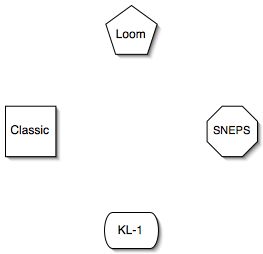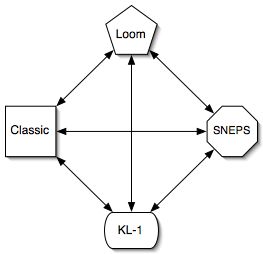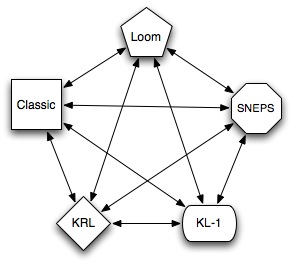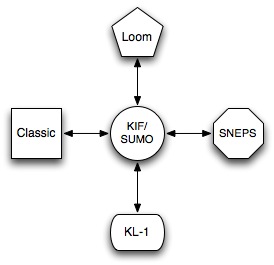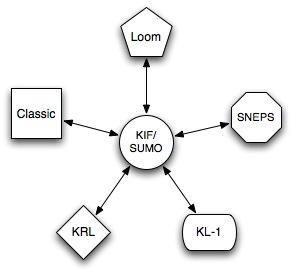On May 3, 2007, at 5:03 AM, Patrick Durusau wrote: > Adam, > > Adam Pease wrote: > >> Hi Chris, >> Many thanks. I was really addressing a point that you weren't >> making, but which is all too common. >> I'm sympathetic to using SUMO for semantic interoperability. >> When I've done projects in that area, it has worked well. At the >> risk of stating the obvious, the advantage, at least in theory, of >> a common model over a federated approach is that one has mappings >> linear in the number of products needing integration, rather than >> potentially N^2. > > I am glad you mentioned the "potentially N^2" issue. I have seen > that claim on a number of occassions but never with what I > considered a convincing explanation of why it must be so. > > For example, assume that I have terms A, B, and C, all of which I > wish to say represent the same subject. > > While I agree that it is possible to say A = B, A = C, B = C, ...., > isn't that an implementation choice? > > In other words, if I have the mapping A = B and then later add B = > C, do I really need A = C? The effect of the first two mappings is > sufficient to reach the desired result. > > Well, it should be noted that relying upon separate mappings does > result in a problem Steve Newcomb has faced with his topic map > implementation, that is how to determine when "all" the mappings > have been performed. > > Ah, or is the N^2 claim based on a requirement that in order to > apply whatever inferences are available at A to C, a direct mapping > is required? Still, that seems to be an implementation question and > not one of the actual mapping. > > That is a particular methodology of mapping is being presumed. I > would assume once the mapping is complete, then the outcomes of > inferencing will be the same. Yes? > > I have usually encountered the N^2 comment when a particular > vocabulary is being advocated. Noting that an implied mapping is > being peformed even by those who advocate a particular vocabulary, > but that the implied mapping is not (usually) available for others > to inspect or use. (The same can be the result using topic maps. > There is no requirement that a mapping in an implementation, which > may be commercial intellectual property, be disclosed. For the most > part, I think greater disclosure can potentially lead to more > interoperability. But, there are tradeoffs and reasonable people > will draw the line on disclosure at different places.) (01) I don't think this is the issue Adam had in mind, Patrick. I believe Adam's N^2 remark doesn't have anything to do with the terms in a particular vocabulary (though there may in fact *be* an N^2 problem of some sort lurking there), but with the number of the languages used by the ontologies one is trying to integrate. Suppose we have four ontologies, each one written in a separate language -- say Loom, Classic, SNEPS, and KL-1 (chosen because I have some appropriate graphics from a presentation I gave a few years ago :-) : (02) Suppose also I have integrated them piecemeal by defining translators for each pair of languages; the situation above requires 12: (01) Now suppose I want to integrate a further ontology written in KRL. By continuing with the piecemeal approach, we now need 20 translators: (01) In general, then, the integration of N ontologies written in N languages requires O(N^2) (specifically, N^2-N) translators. (01) By contrast, if instead you integrate your ontologies by using a single, highly expressive "hub" like SUMO (written in KIF), you need only 8 translators to begin with: (02) and if you add a new ontology in a different language, all you need is two new translators between that ontology's language and the hub language: (01) The number of translators needed on this paradigm is thus strictly linear relative to the number of languages. (01) For my part, with the development of standardized languages like those from W3C and the Common Logic dialect XCL, this problem seems to me to be a bit anachronistic. (02) Chris Menzel (03) _________________________________________________________________ Message Archives: http://ontolog.cim3.net/forum/ontolog-forum/ Subscribe/Config: http://ontolog.cim3.net/mailman/listinfo/ontolog-forum/ Unsubscribe: mailto:ontolog-forum-leave@xxxxxxxxxxxxxxxx Shared Files: http://ontolog.cim3.net/file/ Community Wiki: http://ontolog.cim3.net/wiki/ To Post: mailto:ontolog-forum@xxxxxxxxxxxxxxxx (01) |
